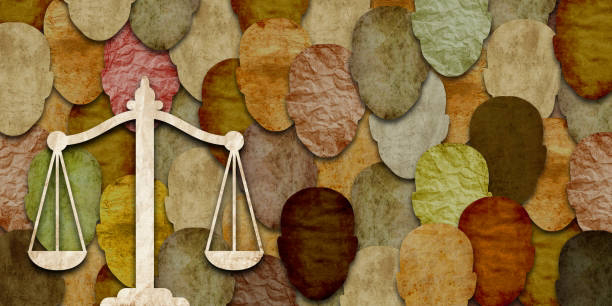The dowry system in India is a practice as old as time, deeply embedded in the cultural and social fabric of the country. Despite numerous legal reforms and growing awareness, this practice continues to thrive, causing immense hardships, especially to women. This essay on the dowry system aims to shed light on its historical roots, causes, effects, and the ongoing efforts to combat it.
◆What is Dowry System?
The dowry system involves the transfer of parental property, gifts, or money at the marriage of a daughter. The Dowry Prohibition Act of 1961 legally defines dowry as any property or valuable security given or agreed to be given directly or indirectly by one party to the marriage to the other party. Despite this prohibition, the practice persists in various forms across the country. In Hindi, it is often referred to as "Dahej Pratha".
Dowry is not merely a financial transaction; it is a deep-seated cultural norm that underscores the perceived value and status of women in Indian society. In many communities, dowry is seen as an essential part of marriage negotiations, often determining the 'suitability' of a match.
◆ Historical Background
The origins of the dowry system can be traced back to ancient times when it was meant to help the newlyweds start their life together. Over centuries, it transformed into a rigid social custom, where the bride's family is often pressured into giving substantial wealth. During the colonial period, dowry became more entrenched, and post-independence, despite legal measures, it remained a significant social issue.
1. Ancient Practices: In ancient India, dowry was considered a form of inheritance for women, as they were often excluded from ancestral property. It was intended to help the bride settle into her new home and was voluntarily given by her family.
2.Medieval Changes: With the advent of feudalism, dowry became a way to secure alliances and increase family prestige. The amounts demanded began to rise, leading to increased financial strain on the bride's family.
3.Colonial Era: British colonial rule further institutionalized dowry through legal systems that marginalized women. The dowry system became more commercialized, with families demanding higher dowries for 'well-educated' and 'high-status' grooms.
4.Post-Independence India: Despite the Dowry Prohibition Act of 1961, the practice has continued, often covertly. Economic liberalization in the 1990s saw dowry demands surge again, correlating with rising consumerism.
◆ Causes of Dowry System
1.Socio-Cultural Factors: Traditional beliefs and societal norms play a significant role in perpetuating dowry. Marriages are seen as a union of families, and dowry becomes a means to uphold family honor and social status.
2.Economic Reasons: Dowry is often seen as a way to ensure economic security for the groom's family. It acts as a financial safety net and a means to recover wedding expenses.
3. Marriage Markets: The dowry system is often justified as a means to 'secure' a good match, creating a market-like scenario. Higher dowries are demanded for grooms with better education, job prospects, and social status.
4.Gender Discrimination: The dowry system is deeply rooted in patriarchal values, where women are considered liabilities. Sons are seen as assets, and marrying them off with substantial dowries is viewed as compensating for the 'burden' of having daughters.
5. Social Pressure: Families feel pressured to conform to dowry practices due to societal expectations and fear of social ostracism. Non-compliance can result in difficulty finding suitable matches and societal disgrace.
◆ Effects of Dowry System
1.Impact on Women: Women often face abuse and violence due to dowry demands, leading to severe psychological and physical trauma. Dowry-related harassment and dowry deaths are grim realities in many parts of India.
2. Economic Burden: Families of brides can be driven to financial ruin due to the high demands of dowry. This can lead to indebtedness, selling of property, and depletion of life savings.
3.Social Consequences: The practice reinforces gender inequality and perpetuates a cycle of discrimination and oppression. It undermines the dignity and status of women, making them vulnerable to exploitation.
4. Marital Discord: Dowry demands often lead to strained marital relationships, resulting in domestic violence, abandonment, and even divorce. The bride's inability to meet dowry expectations can result in continuous harassment.
5. Mental Health Issues: The stress of dowry demands can lead to severe mental health issues, including depression, anxiety, and suicidal tendencies among both the bride and her family.
6. Disruption of Social Fabric: The dowry system disrupts the social fabric by fostering a transactional view of marriage. It reduces the institution of marriage to a mere economic exchange, eroding its sanctity and emotional foundation.
◆Dowry System in Contemporary India
Despite modern advancements, the dowry system remains prevalent in India. High-profile cases frequently make headlines, highlighting the ongoing issue. Social media and news platforms play a crucial role in raising awareness and bringing these issues to the forefront.
1. Current Statistics and Data: According to the National Crime Records Bureau (NCRB), thousands of dowry-related cases are reported annually. Dowry deaths, where brides are killed or driven to suicide over dowry disputes, remain alarmingly high.
2. High-Profile Cases: Several high-profile cases have brought attention to the severity of the dowry problem. These cases often involve prominent families, highlighting that the practice transcends socio-economic boundaries.
3.Social Awareness and Activism:
Grassroots movements and NGOs play a critical role in combating dowry practices. Social media campaigns, educational programs, and public awareness initiatives are crucial in changing societal attitudes.
◆Legal Framework and Enforcement
The Dowry Prohibition Act of 1961 was a significant step towards combating the dowry system. However, its implementation faces numerous challenges, including societal resistance and lack of enforcement. The judiciary and law enforcement agencies continue to work towards stricter enforcement of the laws.
1.Dowry Prohibition Act of 1961: This act prohibits the giving or taking of dowry and imposes penalties for those involved in dowry transactions. It also empowers the government to appoint Dowry Prohibition Officers to ensure compliance.
2.Implementation Challenges: Despite the legal framework, implementation remains weak. Corruption, lack of awareness, and societal acceptance of dowry practices hinder effective enforcement.
3. Judicial Response: The judiciary has been proactive in interpreting dowry laws and issuing stringent penalties for violations. However, the legal process can be slow, and many cases remain unresolved for years.
4. Role of Law Enforcement: Police play a crucial role in enforcing dowry laws. Training programs and sensitization workshops are essential to equip law enforcement officers with the skills to handle dowry cases effectively.
◆Efforts to Eradicate Dowry System
Various initiatives aim to eradicate the dowry system:
1.Government Initiatives: Policies and schemes to promote dowry-free marriages. Campaigns like "Beti Bachao, Beti Padhao" (Save the Daughter, Educate the Daughter) aim to change societal attitudes towards girls and promote gender equality.
2. Role of NGOs: Non-governmental organizations actively work to raise awareness and provide support to victims. These organizations offer legal assistance, counseling, and rehabilitation services to survivors of dowry harassment.
3.Grassroots Movements: Community efforts and local leaders play a crucial role in changing mindsets and practices. Grassroots initiatives often focus on education, awareness, and community engagement to combat dowry practices.
4.Educational Programs: Schools and colleges can play a significant role in eradicating dowry by incorporating gender sensitization and legal awareness programs in**Efforts to Eradicate Dowry System (continued)**
4.Educational Programs: Schools and colleges can play a significant role in eradicating dowry by incorporating gender sensitization and legal awareness programs into their curricula. Educating the youth about the legal and social implications of dowry can help in changing mindsets from a young age.
5.Community Engagement: Engaging community leaders and influencers in the fight against dowry can lead to more effective results. Community-based initiatives and dialogues can help break down the cultural norms that support dowry.
6.Media Campaigns: Using various media platforms to spread awareness about the negative impacts of the dowry system and promote dowry-free marriages can reach a wider audience and encourage societal change.
As the author, I believe that while laws are essential, they are not sufficient on their own to eliminate dowry. The real change must come from within the society itself. Education and awareness are key to shifting the cultural mindset that views women as commodities. Schools and community programs should emphasize the value of gender equality and the importance of respecting women’s rights.
concerning trend in the present scenario is the increasing focus on the economic status and luxury associated with prospective grooms. It is not uncommon for the girl's family, or even the girl herself, to prioritize finding a wealthy husband over evaluating his skills, intellect, and nature. This phenomenon often occurs irrespective of whether the girl has a high-level professional background or significant accomplishments of her own. Such an approach not only perpetuates the materialistic aspects of marriage but also reinforces gender stereotypes and the commodification of relationships. It is essential to challenge these norms and emphasize the importance of mutual respect, understanding, and shared values in a marriage, rather than material wealth.
Only then can we hope to eradicate this pernicious practice and build a more just and equitable society.













